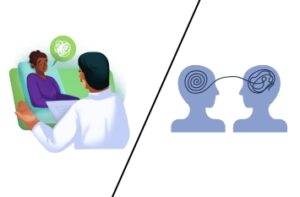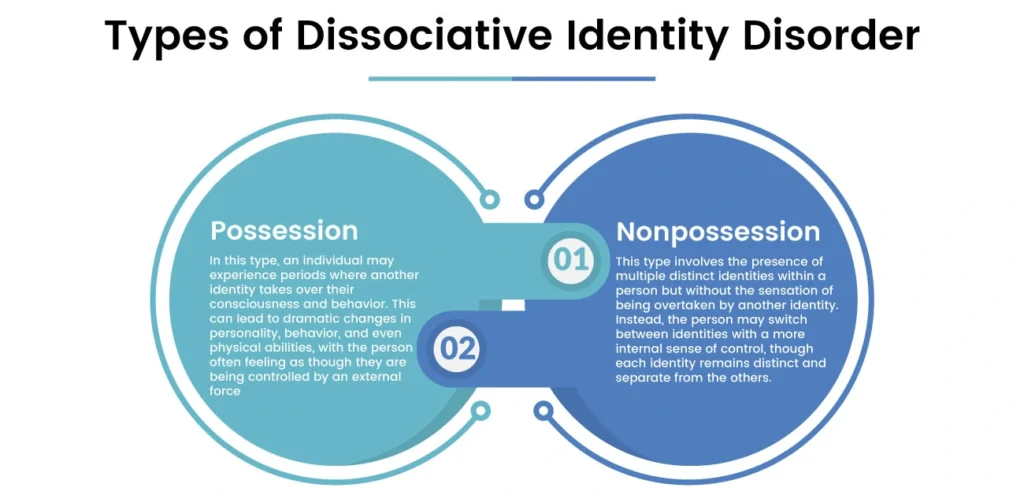
Counseling vs. Therapy: What’s the Difference, and Which One Do You Need?
Counseling vs. Therapy: What’s the Difference, and Which One Do You Need? When You’re Ready to Seek Support When you’re ready to seek support for

Are you waking up each day not quite sure who you are or why your memories seem fragmented and elusive? For many, this is a troubling reality, leading to questions like “Dissociative identity disorder—is it real?” This condition, often misunderstood and sensationalized, represents a profound struggle for those affected.
Healthcare experts emphasize that Dissociative Identity Disorder (DID) is not a fictional construct or merely a result of attention-seeking behavior. Instead, it’s a genuine psychological condition rooted in severe trauma and complex emotional responses.
Understanding the authenticity of DID is crucial, not only for fostering empathy but also for ensuring those affected receive the appropriate care and support they need.
Dissociative Identity Disorder (DID) is a complex and often misunderstood mental health condition characterized by the presence of two or more distinct personality states or identities within a single individual.
Each of these identities may have its own name, age, history, and traits, and they can take control of the person’s behavior at different times. DID often emerges as a coping mechanism in response to severe trauma or abuse, particularly during early childhood.
The disorder is marked by significant gaps in memory and consciousness, making it challenging for individuals to integrate their various identities into a cohesive self.
For individuals with Dissociative Identity Disorder (DID), daily life can be a labyrinth of fragmented experiences and emotional turbulence. One of the core experiences is disconnection; they often feel detached from their surroundings, as if they are observing their life from a distance or in a dreamlike state.
This sense of detachment can be coupled with identity confusion, where the person struggles to integrate their different identities, each of which may have its own distinct personality traits, memories, and behaviors. Observation of their own actions and thoughts from an external viewpoint can be common, leading to a feeling of being a passive observer in their own life.
Additionally, distortion in perception is frequent, where reality can seem altered or unreal. Memory problems are also prevalent, with individuals experiencing significant gaps in their recollections, often finding themselves unable to recall crucial events or details from their past.
Dissociative Identity Disorder (DID) is a real and recognized mental health condition, validated by extensive research and clinical observation. It is categorized as a dissociative disorder in major diagnostic manuals, such as the DSM-5 (Diagnostic and Statistical Manual of Mental Disorders, Fifth Edition).
DID is characterized by the presence of two or more distinct personality states, each with its own patterns of perceiving, relating to, and thinking about the environment and self.
Despite misconceptions and skepticism, clinical evidence supports the existence of DID, affirming its legitimacy as a serious psychological disorder that requires appropriate diagnosis and treatment.
Dissociative Identity Disorder (DID) can manifest in various ways, primarily categorized into possession and nonpossession types. These categories reflect different patterns of identity alteration and control within the individual.

Managing and treating Dissociative Identity Disorder (DID) requires a comprehensive and tailored approach, focusing on stabilizing the individual and integrating their distinct identities. Here are the key components of effective management and treatment:
Psychotherapy:
The cornerstone of DID treatment is long-term psychotherapy, often involving cognitive-behavioral therapy (CBT), psychodynamic therapy, or specialized techniques like trauma-focused therapy. The goal is to help individuals process and integrate traumatic experiences, build coping strategies, and work towards unifying their fragmented identities.
Medication:
While there is no specific medication for DID itself, medications may be prescribed to address co-occurring conditions such as depression or anxiety. These can help manage symptoms that often accompany DID and improve overall functioning.
Support and Education:
Education about DID for both the individual and their support network is crucial. Understanding the disorder can foster empathy, reduce stigma, and facilitate a supportive environment that aids in the healing process.
Crisis Management:
For individuals experiencing severe distress or crisis episodes, immediate interventions such as crisis counseling or hospitalization may be necessary to ensure safety and stability.
Dissociative Identity Disorder (DID) is often surrounded by myths and misconceptions that can obscure understanding and perpetuate stigma.
Myth: DID is just a result of attention-seeking behavior.
Reality: DID is a serious psychological condition that typically arises from severe trauma, especially during early childhood. It is not a behavior chosen for attention but rather a complex coping mechanism to deal with overwhelming stress and abuse.
Myth: People with DID are faking their symptoms.
Reality: DID is a legitimate disorder with extensive clinical validation. The experiences of identity fragmentation and memory gaps are genuine and not fabricated. Diagnosis is based on thorough psychological assessment and clinical observation.
Myth: DID is the same as schizophrenia.
Reality: DID and schizophrenia are distinct conditions. While DID involves a disruption in identity and memory, schizophrenia primarily affects perception and thought processes, often involving hallucinations and delusions. DID is a dissociative disorder, while schizophrenia is a psychotic disorder.
Myth: Individuals with DID are violent or dangerous.
Reality: Most people with DID are not violent or dangerous. The disorder itself does not inherently lead to aggression or harm. Misunderstandings and media portrayals can exaggerate the risks, but violence is not a characteristic of DID.
Myth: DID is a rare and unusual disorder.
Reality: DID is more prevalent than often assumed, though exact prevalence rates can be challenging to determine due to diagnostic complexities. It is not an uncommon condition, especially among individuals with a history of severe trauma.
Psychologists have a range of perspectives on Dissociative Identity Disorder (DID), but there is a general consensus in the field regarding its validity as a legitimate psychological condition.
While some debate exists about the prevalence and diagnostic criteria, most mental health professionals agree that DID is a real and serious disorder, particularly when viewed through the lens of trauma and coping mechanisms.
Clinical evidence and research support the existence of DID, though there are ongoing discussions about best practices for diagnosis and treatment. The overarching agreement is that DID requires careful assessment and compassionate care, underscoring its significance within the realm of mental health.
Preventing Dissociative Identity Disorder (DID) is challenging, primarily because it is often a response to severe and unavoidable trauma or abuse during childhood. However, addressing and mitigating the risk factors associated with DID can play a crucial role in prevention.
This includes creating a stable and supportive environment for children, providing early intervention and treatment for trauma and abuse, and ensuring access to mental health resources.
While it may not be possible to prevent all cases of DID, fostering resilience and offering support can help reduce the risk and potentially mitigate the severity of the disorder.
The question “Is Dissociative Identity Disorder real?” is answered affirmatively by the mental health community. DID is a genuine and complex disorder that arises from severe trauma and affects individuals in profound ways. Understanding and acknowledging its legitimacy is essential for providing effective support and treatment.
By debunking myths, addressing risk factors, and focusing on compassionate care, we can better assist those affected by DID and contribute to their journey toward healing and integration.

Counseling vs. Therapy: What’s the Difference, and Which One Do You Need? When You’re Ready to Seek Support When you’re ready to seek support for
